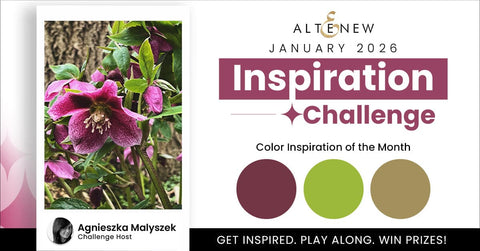Easy Ideas on How to Use Acrylic Ink as Watercolor
Last Updated: September 24, 2021
Did you know that simply thinning your acrylic ink will give you that traditional watercolor effect while allowing you to correct your layering mistakes?

Watercolor can be fun and exciting to use, especially for arts and crafts beginners. But it can prove to be a little problematic and challenging sometimes as it is somewhat hard to control. The colors quickly fade and tend to be lighter when they dry up. Mastering the art of mixing and blending watercolors is something that not many watercolor enthusiasts can easily do. With its fluid nature, watercolor is quite an unforgiving and unpredictable medium. Another thing about watercoloring with inks is that, well, it reacts with water or any water-based medium, making it tricky to layer colors or create dimension.
Acrylic ink, on the other hand, is entirely insoluble when it dries up. This makes it more predictable and easy to handle as compared to watercolor ink. Each layer dries up quickly, and adding a new layer won’t ruin the previous layer. With acrylic ink, you can layer as many colors as you want, minus the muddy look. As a result, you can produce more depth and rich colors in your painting.
Watercoloring with acrylic ink is a great way to elevate your design by adding dimension and making your colors pop off the page. You can also practice a few watercolor techniques, such as transparent washes. If you want to learn more about how to use acrylic inks and watercoloring, keep on reading!
Here are a few quick and easy ways to do watercoloring with acrylic ink:
1. Try diluting acrylic ink with water
When acrylic ink is diluted with water, it becomes more fluid and transparent like traditional watercolor paint. Though it will look like watercolor, the thinned acrylic ink will dry true to its color. They don’t fade or become pale when dried up, unlike when you do watercoloring with inks. But diluting it depends on the surface you will be using. There are specific amounts or measurements of water varying from paper to paper. You may thin it to your desired transparency on an absorbent paper. If you are using canvas, thinning the acrylic with water by over 25% (don’t go over 25%!) is highly recommended. Acrylic ink dries in a honeycomb pattern, and too much water may disrupt it, which will cause flaking off the canvas. If you want to have more of a watercolor effect, you can use watercolor paper.

2. Always use appropriate brushes for each surface or paper
You can choose which paper to use depending on the paint brush that you’re using. For stiff edge brushes, you may opt to use dry paper. You have to dampen your paper with distilled water before using the thinned acrylic ink for soft edges.
This will reduce surface tension for smoother edges. Moreover, it is not advisable to use sable brushes when watercoloring with acrylic ink. It may cause bristle breakage, especially if you do not clean them meticulously after using them. In layman’s terms, it is much preferred to use synthetic brushes because these work better with the compounds in acrylic ink.
3. Apply basic watercoloring techniques using thinned acrylic ink
When it comes to acrylic inks and watercoloring, learning a few watercolor techniques is vital. If you think these two very different inks won’t render the same result, think twice! Whatever watercoloring techniques you have in mind, you can try it with acrylic inks too.

Wet-in-Wet
This is one of the most basic watercoloring techniques that you must have done already without realizing it. First, you apply water onto your paper and then spread the thinned acrylic ink using your brush over the water wash. This will allow the colors to mix and will be the foundation of your painting. Like painting a wall, you have to cover it first with white paint before layering it with the final color.
Layering
Adding one color on top of another color can create dimension, texture, and depth. This is another excellent technique when watercoloring with inks. Ensure that the last wash of paint has dried up before adding another layer to prevent smudging or bleeding. If you want to achieve a darker hue, you can put layers of the same color and leave the paint underneath untouched and permanent. This is always done when tinting.
Tinting
This is one of the greatest assets of acrylic ink. Adding white paint to acrylic ink to lighten its color is what tinting is all about. When doing art with acrylic inks and watercoloring, you have to know each color’s tinting strength. This will allow you to find out the limit of how much you can lighten each color. Tinting is a great technique when adding a highlight to your painting, such as where you think sunlight would be touching.

Blending
You might think it’s hard to blend acrylic ink, but this can be achieved with diluted acrylic ink. Although watercoloring with inks is much more comfortable when creating beautiful gradients, this doesn’t mean you can’t do the same when watercoloring with acrylic ink. To do this, you can add another wash of color while the previous color is not yet dry. This way, you can mix and blend the colors to your desired result.
Watercoloring with acrylic ink can help you practice and explore more techniques, especially as a beginner. There are more techniques that you can try with acrylic ink and not with watercolor ink. However, it is essential to note that there are downfalls as well when using acrylic ink as watercolor. Since it is made of latex binder, it is insoluble, so once dry, it will stay dry. That is the reason why it won’t blend easily with other colors when layered. Also, some pigments of acrylic ink might behave differently. Although a watercolor effect can be achieved, these two are still very different media with their unique quality and properties.
Nevertheless, we hope these quick and easy watercoloring ideas using acrylic ink help get you started.
2 comments
In This Article
More Crafty Reads & Inspirations
-

Starting 2026 With a Clean Slate and Using Up Leftovers
-

January 2026 Inspiration Challenge
-

Simple Tips To Bring Your Die Cut Florals To Life - A Touch of Sparkle With Carissa Wiley
-

3 Secrets for No-Outline Watercoloring: The Art of the Disappearing Line | Perfect Pairings with Jaycee
-

Card Ideas that Symbolize New Beginnings
















Does the watercolour paper have to be quite wet & does canvas have to be wetted too. I’m new to this, I had trouble trying to get a smooth edge, perhaps I didn’t wet my paper enough. I found your article helpful, thanks for sharing.
Does the watercolour paper have to be quite wet & does canvas have to be wetted too. I’m new to this, I had trouble trying to get a smooth edge, perhaps I didn’t wet my paper enough. I found your article helpful, thanks for sharing.